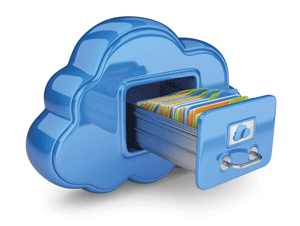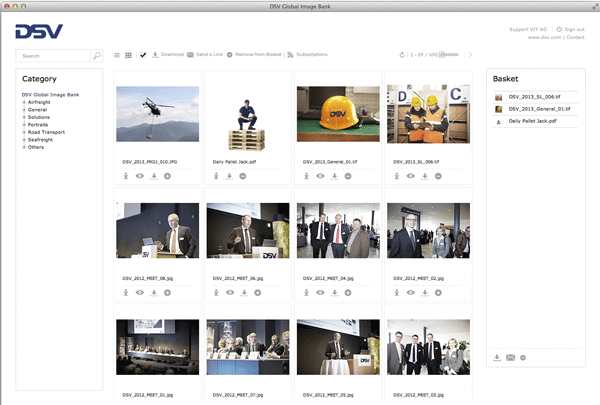DAM as cloudy as you like it ...

Digital asset management (DAM) software maker Picturepark offers a browser-based DAM that works in the cloud (SaaS), on-site or as a hybrid. Leveraging Microsoft .NET and SOA for global integration possibilities, CEO Ramon Foster believes the Swiss-made solution offers a unique ability to handle the multimedia needs of a single department or scale to satisfy the needs of a global multinational requiring a multi-tenanted approach.
IDM: Picturepark is kind of new to the market in Australia and New Zealand - where does the product come from and what is your background in digital asset management?
RF: The company was founded in 2000 a spin-off of an existing pre-press company and internet service provider in Switzerland. I was freelancing for them then and then worked in different companies as a project manager, mainly for marketing communication departments, and with regard to technology integration and content management. Since coming back to work full-time at Picturepark in 2004 I have worked in marketing and sales roles, and then actually became CEO two years ago. My background is more in economics and journalism, which is where it all started.
IDM: Many organisations that read IDM are assessing the need to move to content management and document management from network file storage. Can they do that all at once with an ECM platform? Why do they need a separate dedicated DAM system for media assets?
RF: Today it’s still a fact that the document management systems just cannot really cope with files that require some special treatment, and this is still the case for imagery, and increasingly for the number one new media form in the market, which is video. These solutions do not really provide decent functionalities with regard to transcoding, conversion and ingest and distribution of files. And document management still is, pretty much, more in-bound orientated - it’s much more about archiving, behind the borders, behind the firewalls. It’s not really for exchanging and distributing content.
 IDM: What are the main obstacles to DAM uptake? There are many organisations with large volumes of images and video in file storage without any descriptive metadata. Is the challenge for them just because it’s too expensive, or time consuming, or complicated?
IDM: What are the main obstacles to DAM uptake? There are many organisations with large volumes of images and video in file storage without any descriptive metadata. Is the challenge for them just because it’s too expensive, or time consuming, or complicated?
RF: I think at the end of the day, it’s not the software. The biggest obstacle is the challenge of getting organised with regard to the data. Data in the area of marketing, communications, or the media assets, is still not organised to the degree it should be. It’s all about having the right processes in place, and respecting these policies in the creation, tagging, and the distribution side of media assets.
We try to consult with our customers, because even if we’re happy that the software’s sold, we also know the software will not survive if there’s not policy in place. We try to partner with the right partners in the market that not just can implement our software, but also provide advice and consultancy to get DAM initiatives rolling into the right direction
IDM: You offer Picturepark in a hybrid model, you offer it as a cloud or as an on-premise solution. What are the advantages of each approach, or is it just a matter of depending on the application to go one way or the other? Why do people choose one over the other?
RF: I wouldn’t say that there’s real benefits for one or the other. It’s down to providing clients with a choice. You can have Picturepark in a cloud, or in one of the clouds, or have it hosted with your dedicated third party provider, or even within your IT infrastructure.
Of course, there’s cost as well. Some people say “Well, I don’t want to have large upfront costs”, or others say “I don’t want to have higher ongoing subscription costs”, or some other concerns that speak more for on-site hosted, “I have a lot of data I need to exchange with that system, and I have to benefit from having a local fast network”.
IDM: You mentioned about the cloud choices in terms of where it’s hosted. That’s often a consideration for government users and some commercial organisations as to where, in Australia, New Zealand and Southeast Asia - what options do they have?
RF: At the moment Picturepark is hosting within the Picturepark cloud, which is our official cloud offering, in Switzerland and in the States. We’re looking next year at extending this to the Asian market. We haven’t yet fully decided where that’s going to be. Additionally, we have some initiatives rolling out with our partner in Australia to provide their local ASP or multi-tenant cloud model for coping with specific requirements to have data on the ground.
IDM Your Web site highlights a number of Picturepark’s built in features that make it different from other DAM systems. How does it make asset sharing easier?
RF: Wherever you are in the system, with a few clicks you can create a link and the link can be published somewhere. That link can then be embedded in a website, you can embed it somewhere else in a press portal and trigger a download of a single or a complete compound file, asset file, containing many files.

An online library created using Picturepark's Ports technology.
IDM: Picturepark revenue was up more than 25% in 2012, which is quite significant. What’s driving the growth?
RF: We are scaling more internationally at the moment, which is on one hand of course quite an investment, but on the other hand, it provides us exposure to new markets where DAM requirements are not satisfied. There’s many organisations already with some kind of DAM system, perhaps file storage with a custom made web layer on top, or an older DAM system which stores data somewhere in proprietary databases. There really is demand for newer web based systems, and DAM systems able to handle exchange of assets rather than just archiving the data in house forever.
IDM: What is the licensing model for Picturepark DAM?
RF: In the traditional licensing model you name users, and everyone with a user account is someone you pay for - that’s not the case in Picturepark. We’re a web based solution and we’ve always been web based since the very early beginning in 1997 and we always understood that in a web based world you cannot charge a single user, and that’s still what it is. You can have as many users in the system that can search, download, distribute files, with their own account, having their own profile stored, and you’re never going to pay for that.
DataBasics is the regional distributor of the Picturepark software. More info at www.databasics.com.au/products/picturepark/
